Wednesday, February 28, 2007
Defense & Foreign Affairs Analysis
Kosovo Albanian Power Struggles and Attendant Factors Overwhelm UNMIK Capacities as Major Violence Looms
Analysis. By Valentine Spyroglou, GIS South-Eastern Station Chief.
The potential for inter-Albanian violence in Kosovo, and not only Albanian nationalistic violence against minority Serbs and neighboring states like the former Yugoslav Republic of Macedonia (FYROM) and Montenegro, is becoming more and more likely as the rival Kosovo Albanian politicians plan to enhance their power through all means, from political to intelligence-gathering to violence.
Even though the Albanians are united in their desire for an independent “Kosovar” state, away from Serbia, there are very strong and long-lived divisions and animosities just under the surface, and these could blow up in any time. At present, the two major factors influencing and exacerbating this effect are the growing prestige and power of the Vetevendosje (Self-Determination) extremist movement, and the sudden disappearance of Ramush Haradinaj, the ex-KLA commander and onetime Kosovo Prime Minister, who was sent back to The Hague, on February 26, 2007, to stand trial for war crimes committed in the Kosovo war.
Power vacuum and threat assessment.
With Ramush Haradinaj gone from the picture, for now, the stage is set for a competition for power between Hashim (also transliterated as Hasim) Thaci, who has great ambitions for a heightened future rôle; Agim Ceku (also Çeku), another KLA veteran and current Prime Minister; and Daut Haradinaj (and the rest of the Haradinaj clan), as well as other more marginal players like the publisher-turned-politician, Veton Surroi, who runs the Ora movement.
Hashim Thaci, another KLA veteran leader, is now the lead opposition politician in Kosovo with his PDK party. He has been in recent speeches trying to appear like a moderate, pro-UN leader, and is telling Albanians to accept the plan devised by the Finnish UN chief negotiator for Kosovo’s future status, Martti Ahtisaari, although this plan does not state exactly that Kosovo would be independent.
Thaci also tried publicly to emphasize that the rights of minorities should to be safeguarded, in order to win the approval of international audiences. Serbs are, however, suspicious of Thaci and the entire former KLA leadership, remembering the ethnic cleansing carried out against them by these leaders.
One of the main battlefields for control between the political/paramilitary elite, and which has been used for a very long time already, is the use of private intelligence agencies under political parties or leaders.
Kosovo SHIK, Directly Linked With Albanian SHIK Intelligence Organization, Prepares for “Big Push” For Kosovo Independence.
In Autumn 2006, Prime Minister Agim Ceku decided to create an official intelligence service for Kosovo, despite the cautions of the UNMIK authorities, who did not mandate such a group, with its dangerous implications for the safety of ethnic minorities and, indeed, its own international staff.
However, a task force within the UK Ministry of Defence, the Security Sector Development Advisory Team (SSDAT), was sent to Kosovo in February and April 2005, officially for fact-finding and advisory purposes, but really to retrieve sensitive data of interest to the UK-US intelligence community regarding Kosovo’s potential to be a terrorist “hotspot”, a British source surveyed by GIS/Defense & Foreign Affairs stated.
The group’s concluding report, in May 2005, noted that “parallel structures”, including “intelligence structures affiliated to political parties” in Kosovo, are important in “undermining security”.
GIS/Defense & Foreign Affairs has learned that the British team confirmed — although it did not publish in its public report — findings that the most potential for upheaval lay with the commonly-known illegal intelligence services associated with the Albanian political parties/paramilitary leaders.
The League for a Democratic Kosovo (LDK), formerly led by the now-deceased Ibrahim Rugova, was long known for having its own private intelligence services, with the tutelage of Rame Maraj, fronting these activities officially through the so-called Institute for Researching Public Opinion and Strategies (IHPSO).
The eyes and ears of Thaci’s PDK, on the other hand, is the SHIK (the same name as the intelligence service of the Republic of Albania), led by Kadri Veseli. In a GIS/Defense & Foreign Affairs report , it was revealed that a leading jihad supporter, and former KLA commander, Xhevat Haliti, was another key figure in the K-SHIK, as were Rexhep Selimi, Ljatif Gasi and the notorious gangster, Sabit Geci. The group takes financing partly from the organized crime.
Further, the roots of the K-SHIK lie in the KLA structures and it received early funding from the Kosovo Albanian diaspora (such as the notorious “Homeland Calling” war fundraising movement), and, to keep legitimate front and contact with certain members of the international community who had — and still have — open access to all locations in Kosovo and throughout the Balkans.
A major example of the international contacts sustained by K-SHIK include The Hague Tribunal (the International Criminal Court on the Former Yugoslavia: ICCY). K-SHIK has infiltrated agents into target areas of interest (chiefly, the Serb-populated ones) through apparently good-willed NGOs, mainly, the Council for the Defense of Human Rights and Freedoms (KLMDNJ).
The Haradinaj effect.
There are conspicuous comparisons between the situations in April 2005, when Ramush Haradinaj was first indicted by the Hague, and now, when he has been returned there (as of February 26, 2007) to await trial. In the first period, the departure of the powerful Haradinaj led directly to LDK-PDK infighting, in which the parties’ intelligence services were used in tit-for-tat bombings, raids and intimidation attempts.
It is highly likely, GIS sources say, that with Haradinaj again being gone in The Hague, this time for potentially much longer, and with Thaci’s position rising strongly by each day, a new “intelligence war” marked by inter-Albanian fighting will confuse and exacerbate the situation.
That is, this renewed infighting will occur at the same time that severe nationalist elements, led by Albin Kurti’s Self-Determination movement, strike against the international UNMIK authorities in order to influence the final status negotiations with Serbia and accelerate the à fait accompli of Kosovo independence, by intimidating the international administration into leaving or drastically restricting its activities.
Signs of this have already materialized: the bombing of an OSCE [Organization for Security & Cooperation in Europe] parking lot in Pec, Western Kosovo, on February 26, 2007; a bombing of UNMIK vehicles a week before in Priština; a major Self-Determination protest on February 10, 2007, which led to two Albanian protesters being killed, dramatically increasing the anti-UN sentiment of the people; and other actions consistent with this trend, such as numerous weapons seizures and resumed checkpoints in different parts of Kosovo.
Destabilizing neighboring states for political clout.
The Self-Determination movement has also pledged to carry its message and movement into neighboring FYROM, with the intention of causing destabilization there so as to influence again the status negotiations. In fact, the group stated its plan to open an office in FYROM and to agitate for the rights of Kosovo Albanian students who chose to study in the major Albanian-populated city of FYROM, Tetovo.
See: Defense & Foreign Affairs Special Analysis: Arms Smuggling Routes Enhance Extremist Capabilities in South-West Balkans; Albanian Separatists Expected to Mobilize in Spring if Kosovo Does Not Get Independence.
However, the PDK leader, Thaci, has strongly criticized Kurti’s group for this plan, and so has the former militant leader of the Albanian NLA (National Liberation Army), Ali Ahmeti, also one of the founders of the KLA, who is from FYROM.4
On February 22, 2007, Self-Determination Movement deputy chairman Glauk Konjufca declared that the Ceku Government’s official acceptance of Ahtisaari’s plan for Kosovo would anger Albanians – who want nothing less than absolute independence from Serbia, to the extent that FYROM may also be destabilized – and in that stage the Haradinaj-Ahmeti militant groupings would return to action a long and extended theater of operation, from Kosovo through western FYROM to Struga in the south, and terrorist attacks elsewhere and in the centre of the country could not be excluded either.
However, the criticism from Ahmeti, now president of the DUI (Democratic Union for Integration), the main Albanian opposition party in FYROM, is deceptive.
GIS/Defense & Foreign Affairs sources in Kosovo reported earlier in the Winter of 2006-07, and it was later confirmed in German reports, that Ahmeti had made a secret visit to the Haradinaj family compound in western Kosovo to plan a scheme of action.
It is in Ahmeti’s interest to challenge the FYROM Government, to force it to allow him to officially return to power, and it is the Haradinaj clan’s interest to take the credit for “liberating” Kosovo, and to exercise the pressure on international administrators in Kosovo to ensure that Ramush Haradinaj, is acquitted and freed from The Hague trial.
Another reason to be skeptical of Ahmeti/DUI’s statement against the extremist movement is the fact that Ahmeti’s uncle, and another founder of the KLA, Fazli Veliu, participated openly in the February 10, 2007, Priština protest in which two people were killed.
Hashim Thaci, who is believed to have allied himself with DUI’s rival, the incumbent DPA (Democratic Party of Albanians), now in coalition in the FYROM Government, openly accused Veliu/Ahmeti of bringing in student protesters by bus for the February 10, 2007, protest from FYROM.
On February 21, 2007, Self-Determination announced opening of offices in Tetovo and Skopje, to organize Albanian students, allegedly to help their civil rights but more realistically to prepare them for future protests and destabilizing acts.
On a related topic, during the 2001 civil war in FYROM — started by Ahmeti’s NLA — it was widely reported that Daut Haradinaj personally oversaw a foreign Islamic Mujahedin brigade which was conducted across the border to the Tetovo theater of conflict, where it then conducted atrocities against Government troops; the connections between the Albanian paramilitary structures and al-Qaida have been widely reported since the mid-1990s.
At the same time, Thaci’s SHIK and the remnants of LDK illegal intelligence structures have been allowed by the UN and KFOR (NATO) forces to remain functioning in Kosovo, because they promise the latter to supply information on Islamic elements.
However, in most cases, GIS/Defense & Foreign Affairs sources attest, the quality of information they supply is of little value or even deliberately false.
Similarly, the ethnic-Albanians have targeted Montenegro. Montenegrin State Prosecutor Vesna Medenica had announced in November 2006, that some Albanians arrested on September 2006 in Montenegro had been charged among others for terrorist acts.
The Albanians were arrested in the southern border town of Tuzi, in the eve of Montenegro’s September 10, 2006, parliamentary elections, the first since the country declared its independence from Serbia. Tuzi is about 20 kilometers south of Podgorica, close to the border with Albania, and is dominated by ethnic Albanians who account five percent of Montenegro’s population.
The members of the group, which is called The Movement for the Rights of Albanians in Montenegro, were planning terrorist attacks in Tuzi in order to intimidate the non-Albanian population there and gain autonomy for the region. The plan’s code-name was Eagle Flight, according to the State Prosecutor Medenica.
At the time, reports revealed that different weapons, including rocket-propelled grenade launchers, mortars, grenades, explosives, machineguns and ammunition, had been found during a raid on houses in the town and in nearby caves.
The group receives financial support from members of the Albanian diaspora in the West, mainly from immigrants in the United States, which helped it secure the weapons, munitions, forged documents and other means needed to carry out the plans. Medenica also quoted that the group maintained close ties with former members of KLA, with whom it planned to carry out joint terrorist attacks.
No matter who the international community overseers in Kosovo side with, they risk of being manipulated by pro-jihadist or jihad-indifferent criminal elements, therefore, and with the bulk of the Administration’s energy being left for self-protection and watching the political situation of Kosovo, they have not many resources left to verify the “intelligence” they receive from such untrustworthy groups.
Meanwhile, the “civil society” elements on which UNMIK also relies to get information (charities, NGOs, confidence-building groups, legal organizations, sport youth associations, conflict resolution organizations) have been completely infiltrated by Islamist-sympathizing elements, some with direct connections to Iran, Saudi Arabia, and so on.
The cumulative result of these factors is the current existence of an extremely volatile, fluid, and particularly dangerous phase in Kosovo and for the Balkan region in whole. At this stage, GIS/Defense & Foreign Affairs sources state, the analysis to be made is that, on the ground, UNMIK civilian control is unaware of what will happen on a day-to-day basis.
To isolate them, there are several “hot button” issues which could at any moment spark a new riot from the Albanians. One is the Ramush Haradinaj issue. Another is the question of the minority Serbs and the popular perception that they receiving too many concessions in the UN-supported status solution.
These issues lead to more protests, and thus to the protesters being attacked by police, which history shows from similar revolts in 1968, 1974, 1981, and 1989 (those ones conducted against Yugoslav authorities, of course), have the cumulative effect of radicalizing militancy in the Kosovo Albanian population.
The West seems to have little stomach for more Balkan policing, with more urgent global problems going on, and in this environment it is clear that Kosovo Albanian militants/political clans now possess an unprecedented tactical advantage.
However, while this comes as bad news for Kosovo minorities and even the average Albanians, it also guarantees continued instability and infighting from the major Kosovo Albanian factions, which can be expected to make further use of their intelligence services for intimidation and attacks.
The timetable for violence remains March-June 2007. By not being watched due to all this confusion, however, strengthened Islamic elements funded by Saudi Arabia, Iran, and other Islamic states can quietly consolidate their position in Kosovo and wait for the moment when the public’s dissatisfaction with the usual political options allows them to be a real political-social alternative, which is the biggest danger for Kosovo.
Historical Considerations on Kosovo.
Palestinian Coalition Designed to Break International Funding Deadlock, But Collapse Imminent
Analysis. From GIS Stations in Gaza and elsewhere.
Sources within the Palestinian Authority (PA) hierarchy have confirmed to GIS/Defense & Foreign Affairs that the fragile sense of “unity” between the Fatah movement and the Islamic Resistance Movement (HAMAS: Harakat al-Muqawama al-Islamiyya) to create a new Government of National Unity was merely designed to break the logjam in international financial support for the PA and direct the flow of funds in their respective direction.
Neither Mahmud ‘Abbas (aka Abu Mazen) nor incumbent Prime Minister Haniya have abandoned their resolve to lead the Palestinian movement and persevere in the jihad for the destruction of Israel (a precondition for gaining grassroots support from the increasingly radicalized and embittered population in the West Bank and Gaza).
Not one Palestinian source from either side of the political divide thought that the Saudi-sponsored union would be durable for more than a very short period, possibly only a few months, and all believed that the principal preoccupation of the two sides was related to “turf wars” for control of financial resources. One source noted: “Israel has nothing to do with this situation, although everyone feels more self-righteous justifying their actions on the basis that Israel is the enemy.”
Despite an international campaign to “paper over differences” and to win support for the PA in the international arena by both Fatah leader Mahmud ‘Abbas and HAMAS leader Khaled Mash’al, the underlying and ongoing conflict between HAMAS and Fatah is more deeply fought than merely ideological or religious grounds.
Gaza, in particular, is a war between clans over financial monopolies.
The various factions within Fatah and HAMAS are gravitating to sources of support, regardless of the ideologies involved, and most will say whatever is desired in order to win support in the form of money or weapons.
Mohammed Dahlan is one of the keys to the ongoing — although temporarily less visible — competition within the Palestinian power structures, particularly in Gaza. As Gaza Preventive Intelligence Chief, Mohammed Dahlan was named, in 2002, as then-PA Chairman Yasir Arafat’s advisor on the Security Council.
In April 2003, then Prime Minister ‘Abbas’ candidate, Col. Dahlan, was named as Minister of State for Security, reporting to the Prime Minister and not to Chairman Arafat. Significantly, Dahlan, who has dealt extensively with the extreme elements of the international jihadist movement, also controls many of the financial franchises in Gaza, from gasoline and cigarette monopolies, to smuggling across the border from Egypt.
Significantly, Dahlan easily bridges the gap from the Fatah mainstream of PA Chairman ‘Abbas to the HAMAS extreme elements. It is not surprising, then, that one of his closest friends is someone who is officially his rival: Muhammad al-Dief (Abu Khalid), commander-in-chief (or “commander-general”) of the Martyr Izz al-Din al-Qassam Brigades, the military wing of HAMAS. Al-Dief has been responsible for bringing more jihadists into Gaza.
Consequently, the Durmush clan which commands the Army of Islam, the operational arm of al-Qaida in the Gaza Strip (under such names as al-Qaida-Palestine, The Holy Jihad Brigade, and Fatah-Brigades of the Islamic Sword), now constitutes one of the pillars of the Fatah’s so-called moderate forces in the Gaza Strip.
The Durmush clan is also instrumental in smuggling of weapons, foreign experts (including Iranians) and goods from Egypt into the Gaza Strip: resources which they deliver to all groups including the HAMAS and Islamic Jihad with which they ostensibly fight.
Furthermore, the various clans have reached a tacit but sternly enforced agreement – mediated by the Islamist Ulema – according to which the mujahedin/fighters involved in operations against Israel (such as launching Qassam rockets) enjoy immunity and can move freely through the lines of all factions and groups irrespective of their standing in the internal fighting.
Indeed, several of the recent barrages of Qassam rockets were launched by mixed teams comprised of mujahedin from feuding entities.The situation of competition and chaos is similar, but not as bad, in the West Bank, where almost total economic decay exists. This reinforces the power of traditional families and power structures.
PA Chairman Mahmud ‘Abbas’ Fatah movement and members of HAMAS, which won the general January 25, 2006, legislative elections, agreed in the Saudi city of Mecca on February 8, 2007, to form a government of national unity. The February 8, 2007, agreement was signed by Mahmud ‘Abbas (aka Abu Mazen) on behalf of Fatah and Khaled Mash’al on behalf of HAMAS.
Within the talks, there was apparently an understanding to hold early presidential and parliamentary elections in the first part of 2008 if the experiment in national unity government proved to be a failure. Nine portfolios were to be given to HAMAS, six to Fatah, four to other parties, and five (including the central ministries of Foreign Affairs, Finance and Interior) to independents.
The Interior Ministry controls most of the security forces and was the most contentious issue and it was agreed that Abu Mazen would choose the minister from a list of independents recommended to him by HAMAS. The Prime Minister would remain Ismail Haniya of HAMAS.
PA Chairman Mahmud ‘Abbas, working to offer a comprise to win over international support for the new PA Government, said on February 26, 2007, that he hoped the new coalition Administration would find a way to recognize Israel despite HAMAS’ refusal to do so. HAMAS leader Khaled Mash’al, however, reiterated his movement’s position that the world should respect HAMAS’ stance and not set conditions on the new Government.
However, behind closed doors, Abu Mazen has been urging the Europeans to channel all funds through the Fatah and not the unity Government, so that his forces – spearheaded by the US-trained and -funded Force 17 – will be able to wrestle power from the HAMAS-led jihadists.
The Saudi attempts at mediation — bringing about the “Government of National Unity” — played, where they could, on religious fervor, but to a large extent this was manipulated by the more pragmatic Palestinian efforts to merely find a way to resume the inflow of cash.
The Saudis alone committed $1-billion in financial support to the PA in order to “mediate” the creation of the new Government of National Unity. And Chairman ‘Abbas and Mash’al are each seeking considerably more in the way of support from the European Union and Russia, possibly hoping, too, that the perception of a coalition government in the PA territory would bring some kind of support from the US State Department.
Ultimately, this may be too late because of the irreversible erosion of the social order in the Gaza Strip. As the director of Israel’s Shin Bet domestic security service, Yuval Diskin, warned in early February 2007, the underlining threat to stability in the West Bank and Gaza Strip is “the crumbling of the Palestinian Authority's governmental control”.
The Gaza Strip has seen "disintegration and a return to the clan stage. There is more clan loyalty today than organizational loyalty." Consequently, Diskin explained, the influence of clans and the commitment to blood-vengeance make the quest for a lasting truce virtually impossible, irrespective of the political desires of the leaders of Fatah, HAMAS, or any other political entity.
Meanwhile, the growing influence of Iran and its protégés, reinforced by a flow of weapons, explosives and funds, exacerbates the radicalization of the population and enshrines the declared commitment to the “liberation of al-Quds [Jerusalem]” and the destruction of Israel.
The aggregate impact of the loss of standing and influence of the political movements, coupled with the grassroots’ commitment to unwavering jihadist causes, is that the emergence of a viable political process – with or without the Mecca Agreement and the “Government of National Unity” – is virtually impossible.
Document of Record
The Hague, February 27, 2007. Statement by the International Criminal Court (ICC) Prosecutor, Luis Moreno-Ocampo.
International Criminal Court Investigation Into Alleged War Crimes in Darfur, Sudan
Over the past 20 months, the Prosecution has conducted an investigation into crimes allegedly committed in Darfur. We have completed the necessary investigative steps and this morning we presented the evidence to the judges.
Throughout the investigation, our Office has thoroughly examined incriminating and exonerating facts in an independent and impartial manner, as established in the Rome Statute. The investigation was very complicated.
Reaching the victims was the priority for our Office. Because we have a duty to protect victims and witnesses, we conducted interviews with them outside Darfur. It was not possible to protect the witnesses in Darfur. We interviewed witnesses around the world, reaching people in 17 countries and collecting nearly 100 statements.
The investigation was greatly aided by documents collected by the United Nations Commission of Inquiry. We very much appreciate their efforts.
During the course of our investigation, we also collected and reviewed documents produced by the Sudanese National Commission of Inquiry. It is interesting to remark that many findings were consistent with findings by the UN Commission of Inquiry. We reviewed a report by the Minister of Defense of the Sudan and obtained information from high Sudanese officials.
In accordance with the Rome Statute our Office has focused its efforts on some of the most serious incidents and the individuals who according to the evidence collected bear the greatest responsibility for those incidents.
The Prosecution has concluded there are reasonable grounds to believe that Ahmad Muhammad HARUN and Ali Muhammad Ali ABD-AL-RAHMAN (better-known as Ali KUSHAYB) bear criminal responsibility in relation to 51 counts of alleged crimes against humanity and war crimes.
These alleged crimes were committed during attacks on the village of Kodoom, and the towns of Bindisi, Mukjar, and Arawala in West Darfur between August 2003 and March 2004.
The attacks occurred during a non-international armed conflict between the Government of the Sudan and armed rebel forces, including the Sudanese Liberation Movement/Army and the Justice and Equality Movement. The conflict involved rebel attacks on Sudanese Government installations in Darfur and a counterinsurgency campaign by the Sudanese Government.
In April 2003, the rebels carried out an attack on Al Fashir airport in North Darfur, destroying aircraft, killing a number of military personnel, and kidnapping the Sudanese Air Force commander. This was a turning point in the conflict.
After, Ahmad HARUN was appointed Minister of State for the Interior of the Government of the Sudan and tasked to head the “Darfur Security desk”.
His position as head of the “Darfur Security desk” became critical. Why? State and Locality Security Committees in Darfur reported to him, especially on matters relating to the staffing, funding, and arming of the Militia/Janjaweed.
The Security Committees were comprised of representatives of the Sudanese Armed Forces, Police and Intelligence agencies plus the Governors of each state.
Shortly after Harun’s appointment, the recruitment of Militia/Janjaweed greatly increased, ultimately into the tens of thousands.
The vast majority of attacks in Darfur were carried out by the Militia/Janjaweed and the Armed Forces, and were directed at areas inhabited by mainly Fur, Masalit and Zaghawa tribes. The attackers did not target any rebel presence. Rather, they targeted civilian residents based on the rationale that they were supporters of the rebel forces.
This strategy became the justification for the mass murder, summary execution, and mass rape of civilians who were known not to be participants in any armed conflict. The strategy included the forced displacement of entire villages and communities.
In this context, Ahmad HARUN and Ali KUSHAYB, acted together, and with others, with the common purpose of attacking the civilian populations of these four villages and towns.
* * * * *
I have submitted to the Judges a 100-page document containing my evidence. Let me summarize some of them.
The evidence shows that Ahmad HARUN visited Darfur on a regular basis and became known to people in Darfur as the official from Khartoum who recruited, armed, and funded the Militia/Janjaweed in Darfur.
The evidence shows that Ahmad HARUN provided funds to the Militia/Janjaweed from a budget that was unlimited and not publicly audited. The Militia/Janjaweed were paid in cash, and Ahmad HARUN was seen traveling with well guarded boxes.
The evidence shows that Ahmad HARUN personally delivered arms to Militia/Janjaweed in Darfur. He was seen in aircrafts loaded with supplies of arms and ammunition, in some cases G-3s and Kalashnikov rifles. These landings were observed in the three Darfur States, North, West and South.
The evidence shows that Ahmad HARUN incited the Militia/Janjaweed to attack the Fur, Zaghawa and Masalit people. Let me give you an example. In early August 2003, HARUN arrived by helicopter in the town of Mukjar as Militia/Janjaweed under the command of Ali KUSHAYB were moving into the town.
Ahmad HARUN met privately with KUSHAYB and then gave a public speech. He stated that “since the children of the Fur had become rebels, all the Fur and what they had, had become booty” for the Militia/Janjaweed. Immediately upon his departure, Militia/Janjaweed looted the entire town.
When victims of the looting complained, they were told that the Militia “could do what they wanted” because “they were acting on the orders of the Minister of State”.
The evidence shows that during a public meeting, Ahmad HARUN said that in being appointed to head of the ‘’Darfur Security desk’’, he had been given all the power and authority to kill or forgive whoever in Darfur for the sake of peace and security.
* * * * *
Let me present some information about Ali KUSHAYB.
Ali KUSHAYB personally led attacks on these four villages and towns. By mid-2003, he was commanding thousands of Militia/Janjaweed.
In one of the attacks in the Kodoom area in August 2003, Ali KUSHAYB was seen issuing instructions to the Militia/Janjaweed. Civilians were being fired upon as they fled.
During the attack on Bindisi on or about 15 August 2003, Ali KUSHAYB was seen in military uniform issuing orders. His forces pillaged and burned homes and shops.
The attack on Bindisi lasted for approximately five days and resulted in the destruction of most of the town and the death of more than 100 civilians, including 30 children.
In Arawala, in December 2003, the evidence shows, Ali KUSHAYB personally inspected a group of naked women before they were raped by men in military uniform. A witness said she and the other women were tied to trees and repeatedly raped.
The evidence shows that Ali KUSHAYB personally participated in a number of summary executions. For example, in or around March 2004 he was involved in the execution of at least 32 men from Mukjar.
The evidence shows Ali KUSHAYB beating these men as they were being boarded into Land Cruisers. The cars then left with KUSHAYB in one of them. About fifteen minutes later, gunshots were heard and the next day 32 dead bodies were found in the bushes.
* * * * *
Based on the evidence the Prosecution has collected, we consider Ali KUSHAYB and Ahmad HARUN to be some of those most responsible for crimes committed in Darfur.
Our evidence shows that they committed crimes against humanity and war crimes including: Rape and other form of sexual violence; murder; persecution; torture; forcible transfer; destruction of property; pillaging; inhumane acts; outrage upon personal dignity; and severe deprivation of liberty.
* * * * *
I would like to say a few words about the admissibility of the case.
According with the Rome Statute I have the duty to assess whether the Sudanese judicial authorities have investigated or prosecuted the same case.
Our Office has conducted five missions to Khartoum where we gathered information on national proceedings from the judiciary, police, and other government departments.
The Government of the Sudan informed the Prosecution that Ali KUSHAYB is under criminal investigation and was arrested on the 28th of November 2006.
Our case is about Ahmad Harun and Ali Kushayb joining each other to attack the civilian population in Darfur. There is no such investigation in the Sudan.
On this basis, the Prosecution has concluded that the case is admissible. To be clear, the admissibility assessment is not a judgment on the Sudanese justice system as a whole. We are just assessing if the Sudanese authorities are carrying out the same case.
The Pre-Trial Chamber I will review the evidence. If the judges accept that there are reasonable grounds to believe the named individuals committed the alleged crimes, they will decide how to ensure their appearance in court.
* * * * *
Let me conclude.
Thousands of civilians died in Darfur either from direct violence or as a result of disease, starvation and the conditions of life imposed by the crimes. Rape is widespread. The conflict has resulted in more than 2 million internally displaced persons and over two hundred thousands refugees.
Our evidence exposes the facts and the suffering of the victims in Darfur as conveyed by the witnesses we interviewed. Based on their stories we built a judicial investigation to unveil the truth, to prosecute the most responsible and to contribute to the prevention of future crimes.
The Office is continuing to gather information about current crimes committed by all the parties in Darfur and is monitoring the spill-over of violence into Chad, including in the refugee camps, and into the Central African Republic, which are both State parties to the Rome Statute.
Our work sends a signal: those who commit atrocities can not do so with impunity.
Subscribe to:
Post Comments (Atom)

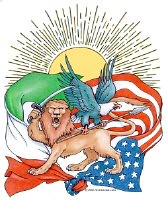
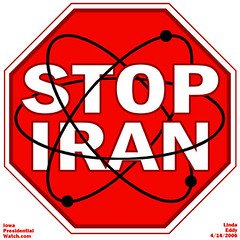

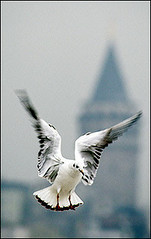



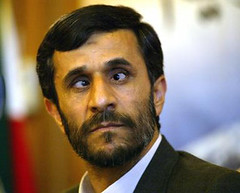



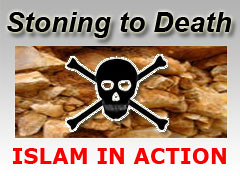

No comments:
Post a Comment